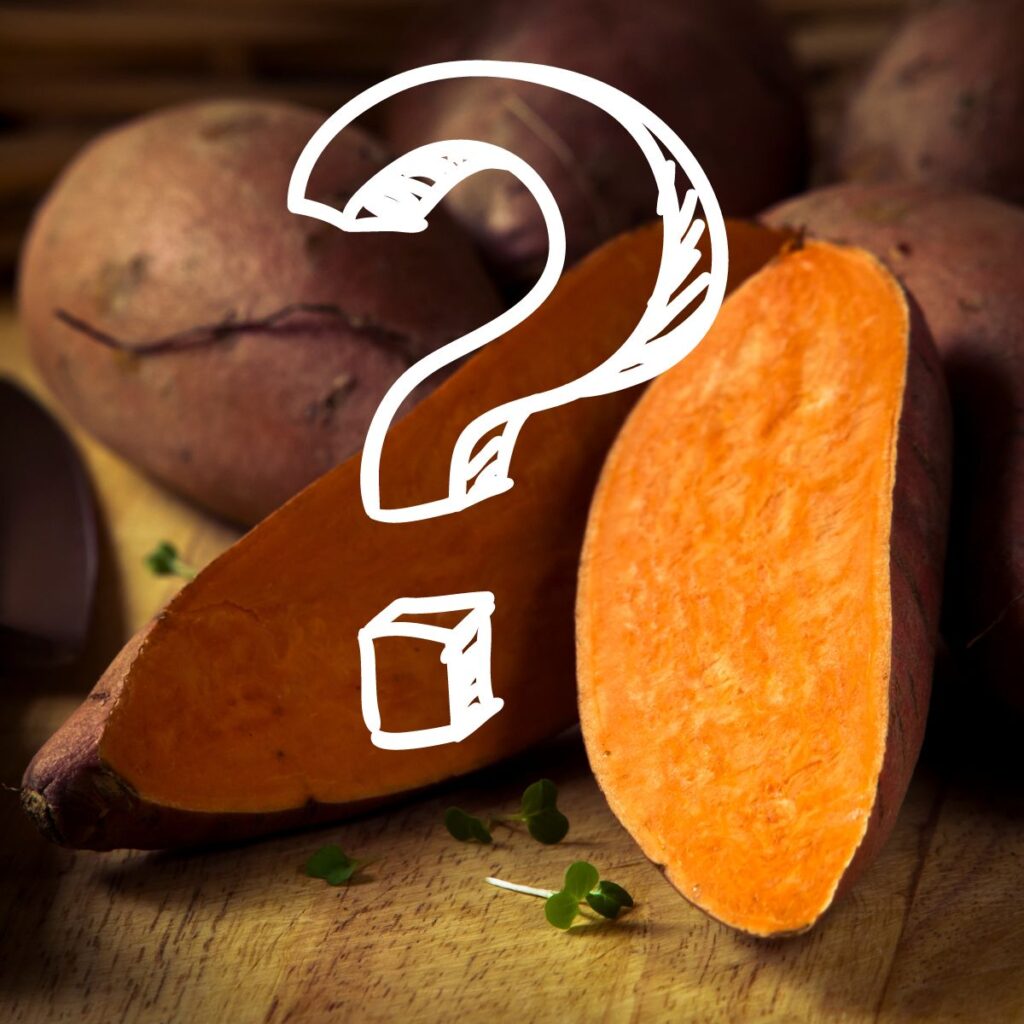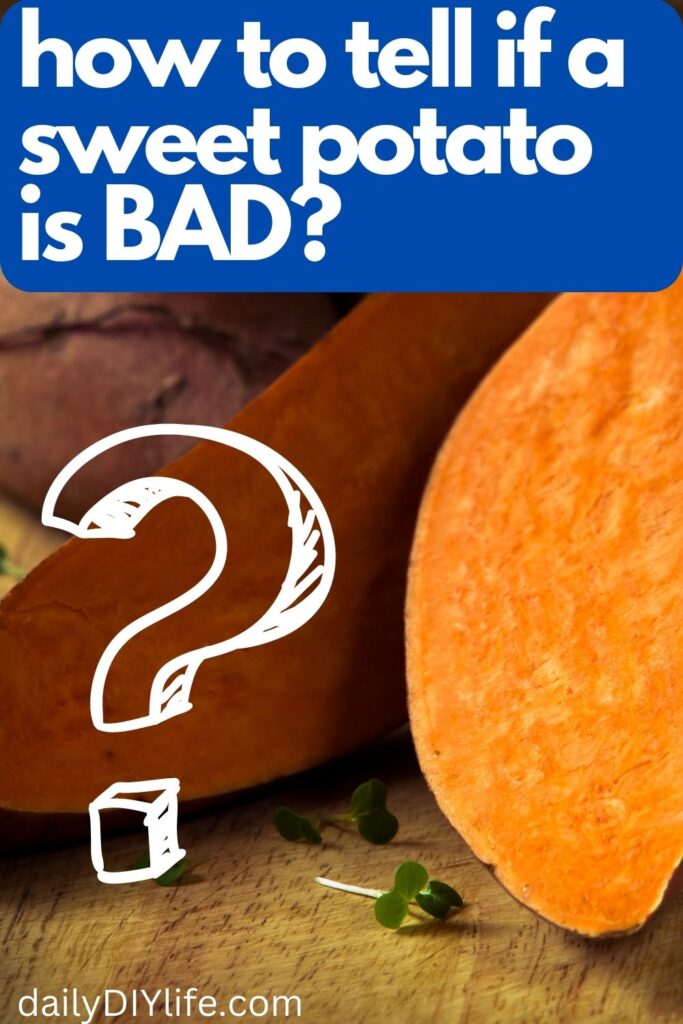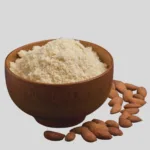Like many orange foods, sweet potatoes are delicious and good for you. But how do you tell if a sweet potato is bad? By observing changes in its texture, smell and appearance. Due to the high moisture content of sweet potatoes, they can spoil quickly if you are not careful.
Sweet potatoes are one of those few vegetables that are so versatile that they can be used in both sweet and savory dishes. A firm favorite in the fall season, they not only taste delicious, but are rich in vitamins and minerals like Potassium, Vitamin A and Vitamin C. Like most root vegetables, they are also a very rich source of Fiber.
In this article, we will talk about:
- Tell-tale signs that they are past their expiration date
- How to select a sweet potato
- How you can store sweet potatoes to maximize their freshness
Casseroles, sweet potato fries, soup, and stews are just some of the dishes that can be made with sweet potatoes. It is also great for baking, and has given us classic dishes like sweet potato pie and candied yams.
How To Tell If A Sweet Potato Is Bad?
You can spot the difference between a fresh sweet potato and a bad sweet potato before cooking or tasting it, just by changes in its appearance and smell. Typical signs of a spoiled sweet potato will be a soft, mushy texture, discolored skin with sprouts or mold, and a foul smell.
Appearance:
Mold
The clearest sign that you should toss it in the trash is the presence of mold on the skin of the sweet potato. If the mold is black, yellow or orange, it is rotten and not just spoiled. Since mold can spread, you should check other sweet potatoes that it made contact with in the pantry or shelf it was stored in.
Discoloration
Along with mold, the sweet potato might also be discolored. Fresh sweet potatoes will have a vibrant orange skin that is smooth on the outside. A spoiled sweet potato will have a darker green, gray or black colored skin that is dull and wrinkled in appearance.
Sprouts
Finally, check for sprouts.
On their own, sprouts don’t necessarily mean that you have to throw the sweet potatoes away. However, it is a sign that the sweet potato is not fresh. If it only has sprouts in one small area and the sweet potato is still firm, you can cut that part off and use the unsprouted parts.
Texture:
If the outside of the sweet potato is dry, and wrinkled, it is a sign that it is not fresh anymore and is on its way to expiring. If it is only dry and wrinkled without more serious signs like mold or mushiness, you may still be able to use it.
A fresh sweet potato will have a smooth surface and a firm texture when you cut into it. If the texture is soft and mushy with a lot of discoloration on the inside, the sweet potato has spoiled or is rotten.
Odor:
A fresh sweet potato would have a neutral smell. If you notice a foul smell from the sweet potato, it is most likely spoiled. Usually, this would be accompanied with other signs such as mold or mushiness.
How To Select A Sweet Potato
In the US, the most common sweet potato varieties you will find in supermarkets are the Jewel and Red Garnet varieties. They are the most frequently used varieties in traditional American dishes (learn how to boil a sweet potato here).
The Jewel has smoother orange skin while the Red Garnet has darker red skin.
Both have orange-colored flesh that is sweet. Though it is less common, there is also the Japanese yam that has purple skin and light yellow flesh.
When you are selecting sweet potatoes, they should feel firm with smooth and vibrant-colored skin. If they feel soft or mushy to the touch, have holes or black spots, they are signs that they are spoiled.
How Long Do Sweet Potatoes Last?
The longevity of sweet potatoes varies depending on their form and storage conditions. When stored in a cool, dark, and well-ventilated space (like a root cellar), raw sweet potatoes can last between 3 to 5 weeks. Avoid storing them in the refrigerator as the cold temperature can negatively affect their flavor and texture. Once cooked, sweet potatoes should be stored in an airtight container in the refrigerator and consumed within a week for the best quality.
If you choose to freeze cooked sweet potatoes, they can extend their shelf life up to 6 to 12 months. However, be mindful that freezing may alter the texture, though the flavor should remain relatively intact. Proper storage not only preserves the taste and quality but also reduces food waste, so it’s well worth taking the time to store your sweet potatoes correctly.
How To Tell If A Sweet Potato Is Bad On the Inside
Quite often, you can tell if the inside of the sweet potato is bad from changes on the outside. When sweet potatoes go bad, the clearest signs are mold (especially if it is black) or if there is a lot of liquid (with a foul smell) seeping out of it. A soft and mushy texture is also a sign that the inside of the sweet potato is not fresh.
However, not every blemish means that you have to throw away the whole potato. If it has some sprouts, holes or light mold in some parts, you may be able to cut off those parts and use the unaffected parts.
Do dark spots mean a sweet potato is bad?
Dark spots are common in both raw and cooked sweet potatoes, even if they are fresh. If the discoloration and dark spots are superficial, and close to the skin, it is still safe to eat. However, if the discoloration runs deep into the center of the vegetable, it can be due to fungal infestation, and not safe to eat.
Small black spots on the skin
There are different types of dark spots and discoloration in sweet potatoes, and they all have different causes. The first type can be found in the skin and external layers of raw sweet potatoes. They exist as small black spots on the outer layers of the sweet potato.
These small black dots are often caused by oxidation reactions between the air and chemical compounds in the sweet potato. If you encounter these spots on raw sweet potatoes after you peel them, you can simply cut them off. This does not affect the flavor or nutrition of the remaining parts.
Gray or brown discoloration on raw sweet potatoes
Sometimes, you may find new gray or brown discoloration after peeling and leaving the sweet potatoes exposed for a while. This is normal and is due to oxidation after the flesh was exposed to oxygen in air. It does not affect the flavor, and you don’t need to cut them off.
If you find gray areas straight after peeling, this can be due to bruising during handling or storage. These parts can taste bitter, but do not affect the remaining parts. So, you can simply cut these parts off and use the rest.
Deep pits that are discolored
On the other hand, if these are black or dark spots that run deep into the vegetable, this can be a sign of fungal infection. In this case, discard the entire sweet potato as it is not safe to eat.
Black spots on cooked sweet potatoes
In some cases, you may notice dark or black spots appearing in cooked sweet potatoes that were not there before. This is due to a chemical reaction between iron in the sweet potato and its naturally occurring organic acids while they are cooking.
These spots on cooked sweet potatoes are harmless, but it does change the flavor in the affected areas, as it can cause bitterness. Because of this, cut off the areas with the spots as soon as the potatoes are cool.
You can avoid these spots on cooked sweet potatoes by adding a bit of lemon juice to the cooking water. To do this, wait until the sweet potatoes have partially cooked, and then add a small amount of lemon juice into the cooking water. What will happen is that the lemon juice, which is also an acid, will compete with the naturally occurring organic acids in the sweet potato.
White stuff just oozed out of my sweet potato. Is it bad?
When you cut into a sweet potato, it might secrete a small amount of milky white liquid. This is normal, and you will it in even the freshest sweet potatoes.
This liquid consists of starch and natural sugars found in the sweet potatoes. As long as the texture of the sweet potato is firm and there are no other signs of expiration (such as mold), there is nothing to worry about.
However, if the texture is mushy and you notice liquid oozing out, the sweet potato has expired. There will also be other signs such as mold, sprouts or a bad odor.
How long do sweet potatoes last?
You can maximize the shelf life of sweet potatoes by storing them in the right conditions.
At Room Temperature
At room temperature, sweet potatoes store well in a cool, dry place. The sweet potatoes should be spread over a large enough area, so that they are not crammed together. This would create a breeding ground for microorganisms, mold and cause bruising.
Ideally, they should be kept in a dark space away from direct sunlight. This could be inside your pantry cupboard, in the basement or in the cellar. When stored this way, you can keep them for up to 3-5 weeks.
In the Fridge
You should never store raw sweet potatoes in the refrigerator. It will alter their taste and make their core firmer and harder to cook. However, if they have been peeled or cut, they can be stored in the fridge in a bowl of cold water. You can keep them for about a day.
If the sweet potatoes are cooked, you can store them in your refrigerator for up to 3-5 days. Use an airtight container or bag to store them.
If you are thinking of freezing sweet potatoes, it works best for cooked sweet potatoes. Raw sweet potatoes do not freeze very well.
You can cook them in a number of ways for freezing: roasting, boiling, or microwaving. Place them in an airtight container or a freezer bag. They can be stored for up to six months.
In the Pantry
How long sweet potatoes last in the pantry will depend on the humidity and temperature of your kitchen. On average, however, they can last for up to a month if they are stored at room temperature in the pantry.
How to store sweet potatoes so they last longer
There are three main requirements for storing sweet potatoes. The place needs to be dry, cool, and dark. It should also be well ventilated.
Places like your cellar, basement or the pantry cupboard, are best suited for this. When stored this way, it can keep for up to 2-3 months.
Follow the guidelines below to store sweet potatoes so that they last longer:
- Brush off any dirt from the sweet potato. Do not wash them as this will introduce moisture and increase chances of mold.
- Ensure that the sweet potatoes are all fresh and there is no mold on the outside. Discard any sweet potatoes that are covered in sprouts or mold.
- Layer them neatly, so that they are not crammed together. This will minimize the spread of bacteria and fungi.
- Do not keep sweet potatoes too close to other vegetables or fruits (bananas for example), as this will cause them to ripen quickly.
Sweet Potato FAQs
What happens if I eat a bad sweet potato?
Consuming a spoiled sweet potato can lead to symptoms of food poisoning such as nausea, vomiting, diarrhea, and stomach cramps. If you suspect that you’ve eaten a bad sweet potato, it’s important to monitor for symptoms and seek medical attention if they persist or worsen.
How long does it take for sweet potatoes to go bad?
The shelf life of sweet potatoes can vary depending on how they’re stored. Uncooked sweet potatoes can last for about 3–5 weeks when stored in a cool, dry place like a pantry. Once cooked, they should be consumed within a week if stored in the refrigerator, and can last up to 6–12 months if properly frozen.
Is white stuff in sweet potato bad?
White, stringy fibers appearing on the flesh of the sweet potato are generally root fibers and are harmless. They are not a sign of spoilage and should not deter you from consuming the vegetable. However, if the white stuff appears moldy, slimy, or has an off-odor, then it’s an indication that the sweet potato has gone bad and should be discarded.
How do you know if sweet potato has gone bad?
Signs of a bad sweet potato can range from subtle to quite obvious. Common indicators include:
- Soft or mushy spots
- A dark place on the skin or blackened areas on the skin or inside the flesh
- An off or musty smell
- Growth of mold or fungus
- A slimy or sticky texture
If your sweet potato exhibits any of these signs, it’s best to discard it to avoid the risk of food-borne illness.










So helpful!
Is a sweet potato that’s wrapped in selafane that’s ready to microwave as bought bad if you see a couple of sprouts?
Ideally, you’d cut them out.
Cellophane.
Schools today, amirite?